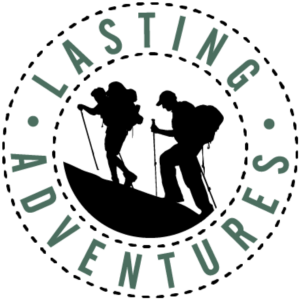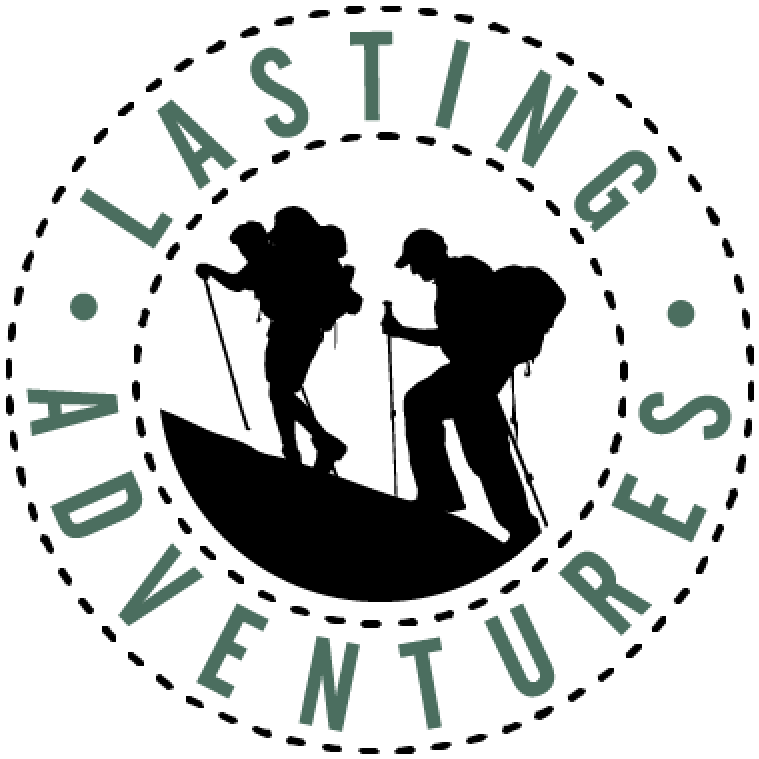What the Camino de Santiago teaches us about the first step.
By: Will Heaps
The Camino de Santiago is a pilgrimage that traditionally passes through the northern provinces of Spain. It was walked 1,000 years before Christ in celebration of the Spring Equinox and the Summer Solstice. The route ended at Finisterre, meaning “the end of the earth”, which was believed to be the westernmost point of the Iberian Peninsula. This made it the best viewpoint of the resting place of the sun as it descended past the horizon. About 900 years after the death of Christ and his main followers, it was declared that the remains of Saint James (Santiago in Spanish) were found in the area now known as Santiago de Compostela. Thus the purpose of the pilgrimage changed from Pagan to Christian.
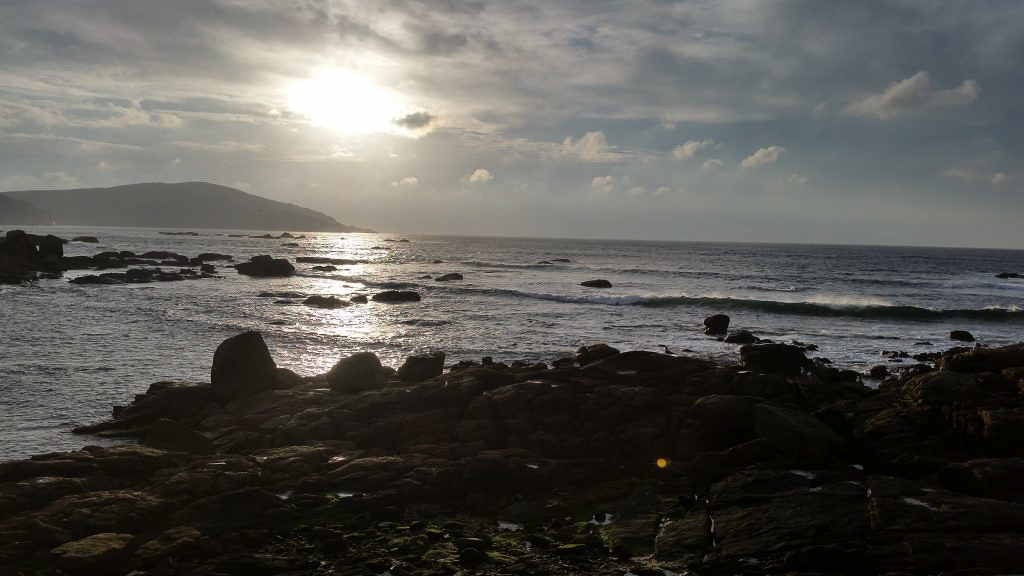
(Sunset over the Atlantic Ocean at Muxia, Galicia, Spain)
In all of that time, people could start from wherever they found themselves at the moment they felt called to walk. If you lived in Southern Spain, your “Camino” started as you left your home in Gibralter, Seville, or Málaga. If you were passing through France when you decided, you could start from Paris, Lyon, or Toulouse. People even started from Russia and Jerusalem. It did not matter if you were a lawyer, inventor, or farmer, if you felt like you needed to walk to Santiago, you dropped everything and walked. The beauty of the camino was not its religious focus, but the simple fact that there were no rules as to who could walk it.
Regardless of what is happening at the moment, everyone has to start from somewhere.
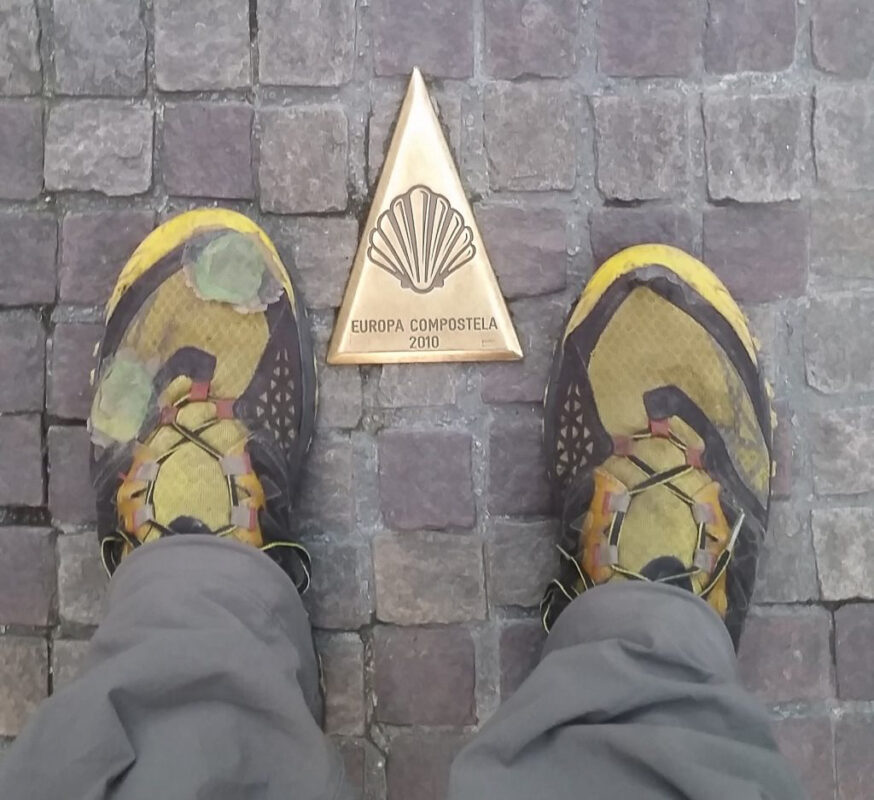
(Day 1: The First Step)
On the Camino today, there are people from all races, religions, and lifestyles. While walking the Camino de Santiago last year, I met Muslims, Jews, Buddhists, Atheists, and of course, Christians. My trail family represented Korea, the Unites States, Mexico, Slovenia, Canada, and Russia. I met people from China, Australia, Portugal, Italy, Japan, England, Ireland, Ghana, Germany, France, Brazil, Argentina, and so many others I can’t even remember them all. I heard languages I didn’t even know existed. I spoke spanish with people from South America, Central America, Mexico, Spain, and even used it to communicate with people that spoke only Portuguese and Italian. I heard people from countries I have never even seen on a map speak perfect english with me, while I attempted to learn what I could of their language. It was a beautiful, multi-cultural experience, and the best part was that everyone had a different reason for being there. We all started at different places. Many of us flew to France and walked the most common path, which is known as the “Camino Frances”, but we all came from different places before that.
We met people with packs from Deuter, Osprey, Mindshift, Quechua, and our favorite at Lasting Adventures, Gregory Mountain Products. We met people with wooden poles, off-brand metal poles, and our hiking brother even picked up a second hand set of the top of the line Leki poles. We saw sleeping bags in every color, ranging from 0° to 50° protection. Clothing ranged from the highest tech fibers to the most worn out jeans and jackets. Footwear was exhausted by the end, but ranged from the best new brands to the oldest functioning models of brands long past. It was such an eclectic collection of new and old that had you shown up without any research, you wouldn’t know what time period you were in. No one standard was set for everyone. Some people had their bags shipped ahead on the harder days so they could walk the miles, others started closer to the goal so they could do it all themselves, and many had to cut it short, making a promise to come back another year and finish the Camino.
I think the tradition that best summed up the lack of barriers and restrictions is the phrase used by all when greeting and bidding farewell. It does not matter if you liked the person or were happy to see them go. It wasn’t based on their background or their gear. The first words you would utter and the last you would hear were, “Buen Camino”, meaning Good Way or Good Walk.
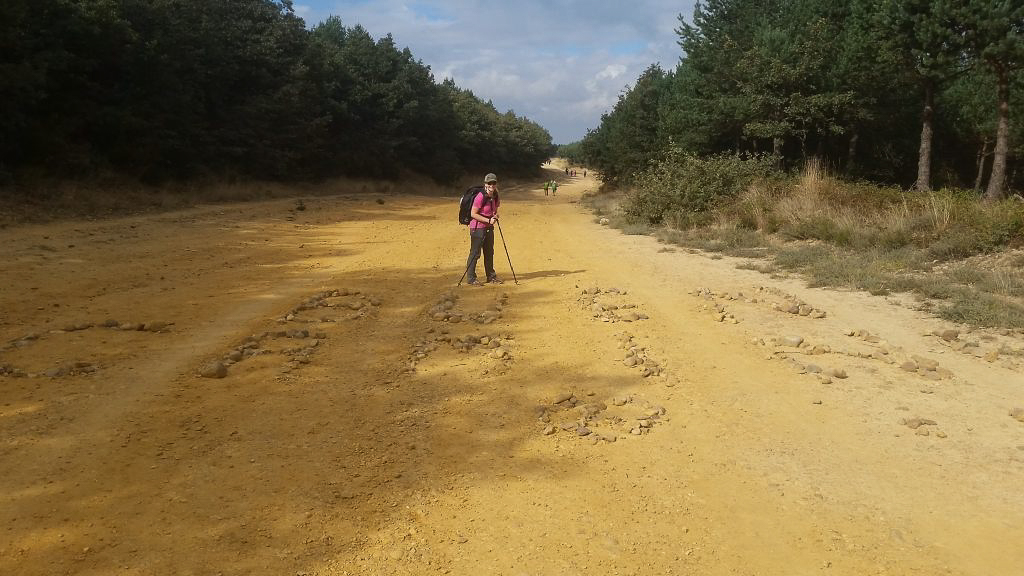
(Rocks placed to say “Buen Camino”)
Just like the Camino de Santiago, backpacking the wilderness is a journey that has no one way to begin. Sure, the Camino used in the example doesn’t require you to camp and it doesn’t require you to cook for yourself, but any outdoor journey doesn’t exact a specific entrance point. Some people are not comfortable in the outdoors and would rather start with a car camping experience and work their way up to an overnight backpacking trip somewhere close to home. Others have an innate drive to leave behind civilization and find themselves utterly alone and still in a place preserved in its natural splendor. You don’t have to be an expert, you don’t have to have previous experience, and you don’t even have to love the outdoors. Nature treats us all the same and with preparation, determination, and gumption, you can have yourself an adventure.
I was born with that drive to hike and yet my first few experiences out in the wilderness were miserable. I grew up on the east coast. You so much as think about going camping and rain clouds will roll in before you can even finish the idea in your head. I spent most of my trips as a youth drenched in rain and cold. On a father/son outing around the age of ten, I woke up drenched in sweat, identical to the rain-soaked landscape outside, and realized I wasn’t breathing. My worn out sleeping bag had a rope loose from the cinch at the top. In my sleep I had moved my head through the hole and rolled over, only to find myself being choked by the gear intended to keep me warm. My father cut me free and we threw that bag out the day the trip was over. I learned that it is important to keep your gear in good condition and be ready to part with it when it no longer fulfills its purpose safely.
In 2007 I planned a four day excursion through the Wasatch Front in Utah County, Utah. My entrance point would take me up a trail that is rarely hiked and almost never backpacked. The first day was a route of 9 miles, the first half gaining 3,600 feet in elevation and the second half dropping the same amount. My gear was borrowed and old, my sleep system was an unnamed brand I had never tested, my cookset was meant to be used over a fire (which isn’t allowed in that area, as it turns out), and my pack was a first generation internal frame pack that was much bigger than my needs. With extra space to spare, I filled it and my pack weighed in at 75 lbs before I even left the house. I hiked all day, exhausted from the effort by the time I hit a campground. I spent the first few hours shedding clothing while I sweat out all the water I had consumed that day and then slowly putting all my clothes on, including my coat, as it dropped below freezing. I hiked out on day 2 and have yet to go back and finish that one. I learned to test my gear before I use it, keep my pack light, do my research, and never underestimate mother nature.
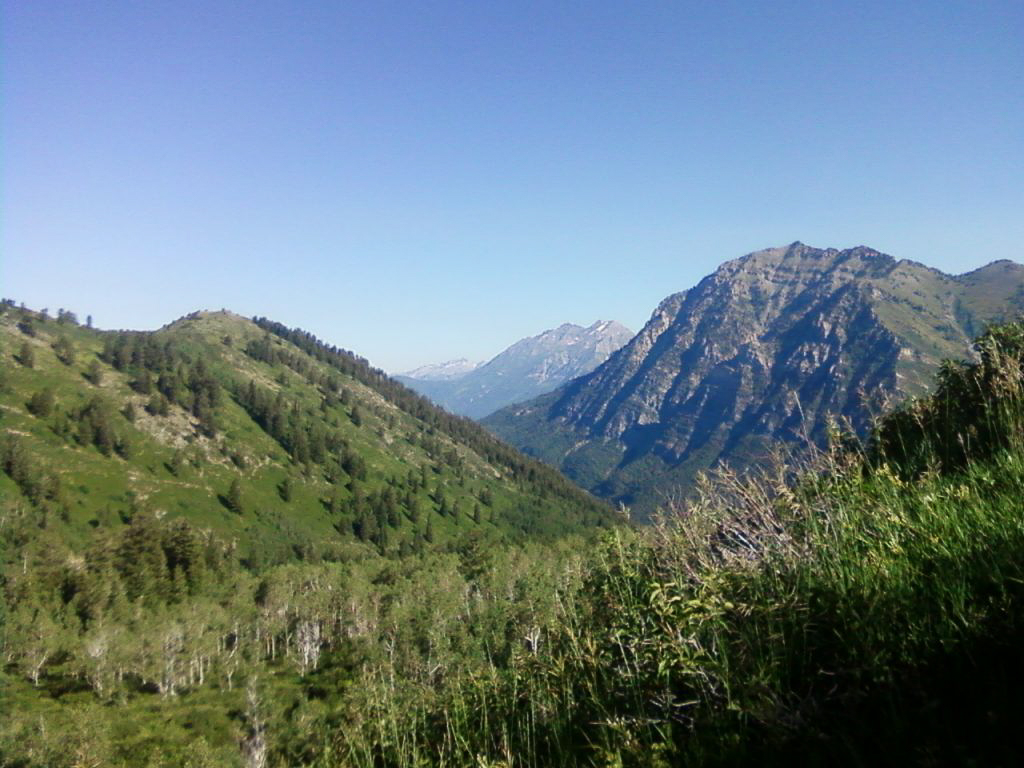
(Uinta Mountains, Wasatch Front, Utah)
In 2010, a day hike up Lone Peak ended in a 911 call and a helicopter flight to the base of the mountain. I was unharmed, as I had told people where I would be and had cell service the whole time, but I was embarrassed. It turns out I had been sick and my body was using its water faster than I could drink it. I ran out of water before the saddle and got lost on the way down. Seeing my story on the news almost kept me from showing my face in the mountains again. But once I was better, I learned to rock climb and snow shoe and found reasons to be in the outdoors again.
Everyone makes mistakes as they take their first steps into the backpacking world. Even in Spain, where most of our co-pilgrims were not “backpacking” (in the wilderness sense of the word), we met people who were ill-prepared, injured, and stubborn. Many people swore they would never do it again, but by the time we reached Santiago de Compostela, we decided to keep walking until we could put our feet in the ocean. Those flaws and mistakes build us up and show us what we are made of. They give us the character we need to push to the places we desire to go. Most people do not enter the wilderness alone with a backpack as a beginner and come out unscathed, but the funny thing about backpacking and adventuring is that when you look back on it, the miserable experiences become lessons learned and all you can seem to remember is what it felt like to be out there, walking away from the world and arriving to where you need to go with nothing but what you can carry on your back.
So if you find yourself doubting whether or not you are in a position to get into the wilderness, stop thinking about it and start now. Stop planning a future event without a timeline and pick a time of year to make it happen. Start researching locations around you or places you have always wanted to visit and figure out what it will take. See what others are carrying. Try out the gear in your yard or the closest campground. Start small and work your way up. These dry runs are often called “shake downs”. Make sure to find your balance between what you feel comfortable using and what you feel comfortable carrying. Sacrifices are a must, but they shouldn’t make you miserable.
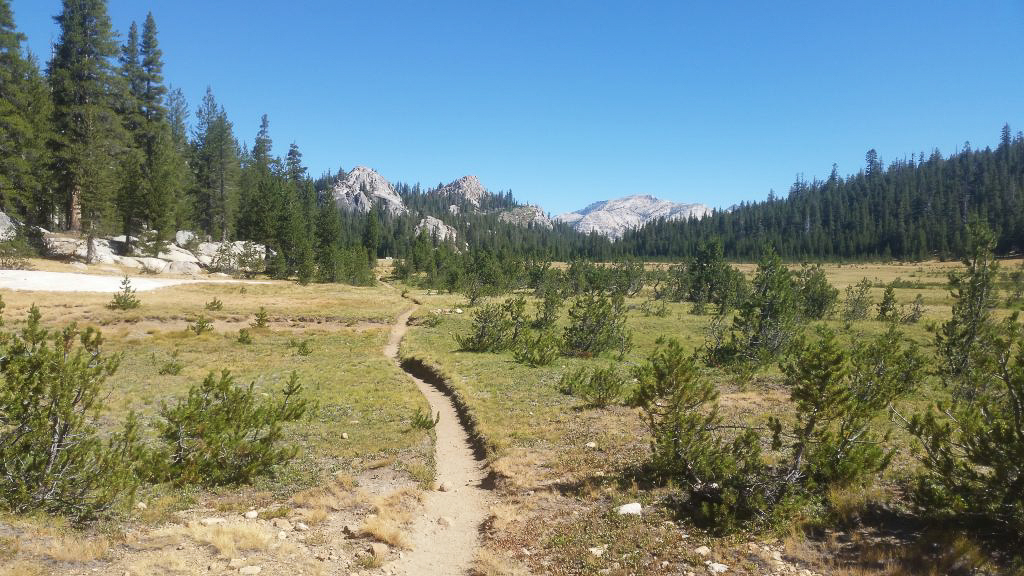
“The journey of a thousand miles begins with one step.” -Lao Tzu
If you are new to the sport of backpacking, let us give you a hand. Our guides provide security with their expert knowledge of gear and the area, and are trained in wilderness medicine should anything go wrong. As with all outdoors pursuits, the ground is hard and cold, the weather is unpredictable, and the food is whatever you can carry, but with a guide you know there’s always someone that can relate to how you feel as you take that step into the outdoor adventure world.
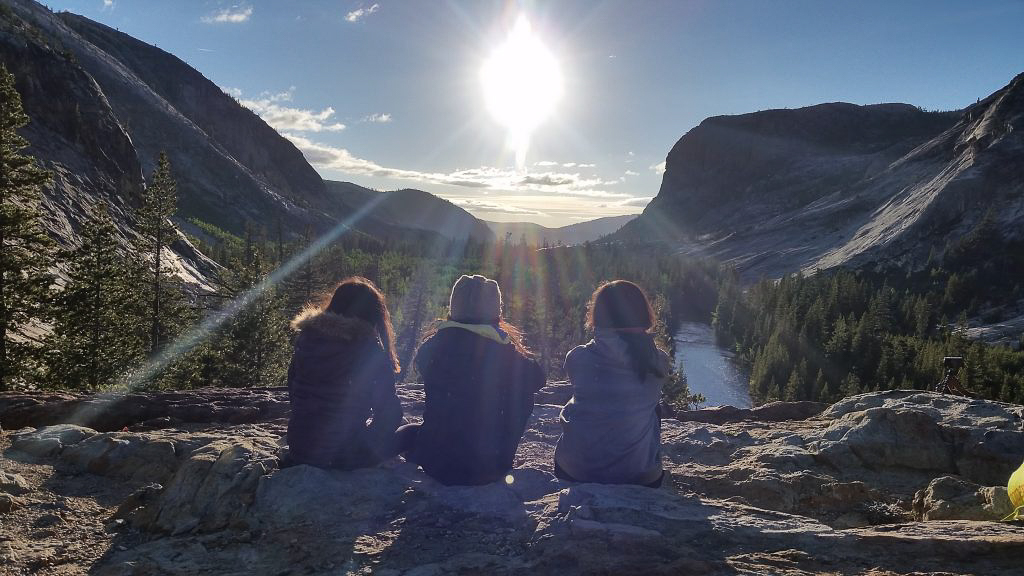
(Sunset during the “Amazing Sunsets” trip with Lasting Adventures)
